- Healthcare Chatbots Key Market Takeaway
- Types Of Chatbots In Healthcare
- The Future Of Chatbots In Healthcare
- Advantages Of Chatbots In Healthcare
- Top 10 Ways Chatbots Are Transforming the Healthcare Industry
- Top Features that are in demand for Healthcare Chatbots
- Examples Of Healthcare Organizations Using Chatbots
- How To Develop A Healthcare Chatbot?
- Conclusion
- How Can We Help With Building Your Healthcare Chatbot?
- FAQ
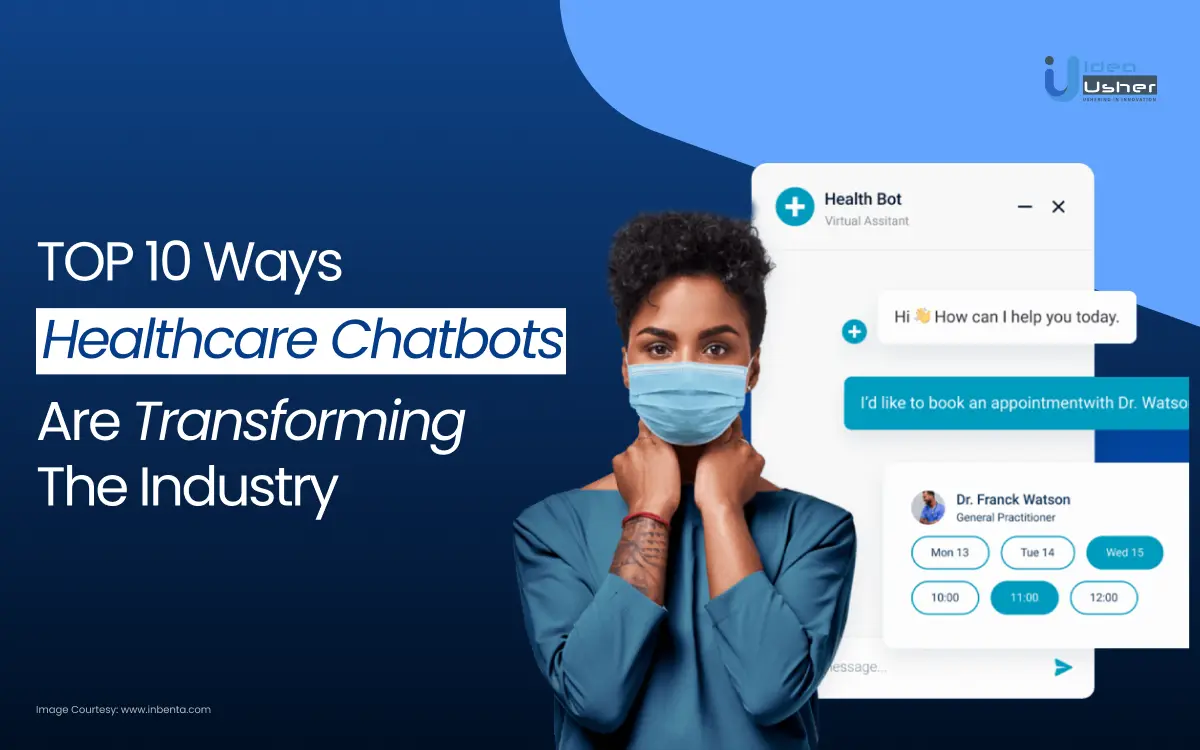
The rapid rise of AI has impacted various industries, and healthcare is not left behind. Medical institutions are using AI-powered chatbots to provide patients with 24/7 assistance.
Healthcare chatbots empower patients to access essential information, enhancing their overall healthcare experience. In healthcare, chatbots are proving to be significant time-savers for medical professionals by automating routine and lower-level tasks typically handled by medical representatives. But their contributions extend far beyond that.
Chatbots can gather and securely store patient data, enabling patient monitoring and offering a wealth of informative support. Ultimately, healthcare chatbots are acting as a transformative force within the healthcare sector.
Let’s learn more about the benefits and applications of chatbots in healthcare.
- Healthcare Chatbots Key Market Takeaway
- Types Of Chatbots In Healthcare
- The Future Of Chatbots In Healthcare
- Advantages Of Chatbots In Healthcare
- Top 10 Ways Chatbots Are Transforming the Healthcare Industry
- Top Features that are in demand for Healthcare Chatbots
- Examples Of Healthcare Organizations Using Chatbots
- How To Develop A Healthcare Chatbot?
- Conclusion
- How Can We Help With Building Your Healthcare Chatbot?
- FAQ
Healthcare Chatbots Key Market Takeaway

Source: Market.us
The healthcare chatbot market is experiencing significant growth fueled by several key factors. The increasing adoption of chatbots themselves, coupled with the growing demand for online health resources, is creating a perfect place for market expansion.
But what exactly is driving this surge in demand for healthcare chatbots? Here’s a breakdown of some of the most significant factors:
- Rise of Virtual Healthcare: The increasing popularity of telemedicine and virtual healthcare solutions is creating a natural fit for chatbots. They offer 24/7 patient assistance, freeing up valuable time for healthcare professionals to focus on more complex medical needs.
- Chronic Disease Management: Chronic conditions like diabetes and hypertension are on the rise. Healthcare chatbots can play a crucial role in managing these diseases by providing patients with personalized advice and medication reminders.
- Advancements in AI and NLP: Developments in artificial intelligence (AI) and natural language processing (NLP) are making chatbots valuable more than ever. AI and NLP allow chatbots to understand and respond to natural language with greater accuracy, leading to more effective patient interactions.
- Cost-Effectiveness: Healthcare chatbots offer a cost-effective solution for providers. Chatbots can significantly reduce the workload of medical professionals and streamline workflows, ultimately leading to improved efficiency for healthcare institutions.
Types Of Chatbots In Healthcare
A chatbot can do much more than provide information and answer queries. Below, we’ll look at the most common chatbot kinds and their primary applications.
1. Feedback Collection Chatbots
After a patient has undergone treatment or received a service, these bots come into play. The primary function of feedback collection bots is to gather feedback from the user and collect patient data. Feedback collection bots allow for the development of more personalized healthcare plans, ultimately leading to increased patient satisfaction.
2. Conversational Chatbots
Conversational bots can provide you with the information you’re looking for, answer your questions, and even guide you through the services offered by a healthcare provider. In some cases, conversational bots can adapt to the conversation, take a proactive approach rather than simply reacting to your inquiries, and even understand your sentiments. Also, conversational bots can quickly provide you with the information you need, saving you time and effort.
3. FAQ Chatbots
FAQ bot acts like a streamlined version of a conversational AI, and its primary function is to
answer commonly asked questions. Pre-programmed questions appear within the dialogue window, allowing users to select the one that applies to them. While this bot is fairly simple, it proves valuable by efficiently connecting patients with the appropriate specialist or offering basic information.
4. Prescriptive Chatbots
Prescriptive chatbots, true to their name, are designed to act as helpful guides for patients. By engaging in conversation, these chatbots aim to understand a patient’s needs and symptoms and typically achieve this by asking questions and prompting users to share their experiences.
However, it’s important to remember that a prescriptive chatbot is not a replacement for a medical professional. A consultation with a doctor is still crucial for proper diagnosis and treatment.
The Future Of Chatbots In Healthcare
With digitization spreading through healthcare, chatbots are set to become increasingly common. Chatbots will have a better knowledge of patient requirements as AI and NLP grow, allowing them to deliver more personalized treatment.
Chatbots may be capable of handling complex medical diagnoses, remotely monitoring patients, and even providing emotional support for mental health issues in the future.
Moreover, the future holds for healthcare chatbots are mentioned as follows:
1. Advanced Medical Assistance and Monitoring
Imagine a world where chatbots continuously monitor patients’ health, acting as watchful guardians. The future chatbots will not only track health status but also offer real-time aid during emergencies. Advance medical assistance and monitoring will be a game-changer, particularly for those managing chronic illnesses or requiring constant care.
2. Proactive Healthcare and Early Diagnosis
The next generation of chatbots can identify early symptoms, analyze them against patients’ medical history, and recommend the most appropriate treatments. A proactive approach will be particularly beneficial for diseases where early detection is crucial for successful treatment. By enabling early diagnosis, these chatbots have the potential to improve treatment outcomes significantly.
3. Enhanced Mental Health and Disorder Management
The future of mental healthcare looks brighter with the help of chatbots. Advancements in Artificial Intelligence (AI) and Natural Language Processing (NLP) will allow chatbots to provide empathetic support and effective management strategies to patients. Mental health and disorder management will empower individuals to tackle mental health challenges with greater ease.
Advantages Of Chatbots In Healthcare
Chatbots have become increasingly important in the healthcare Industry. Their ability to communicate and complete tasks in a conversational way offers several advantages. Here are a few advantages of chatbots in healthcare that are worth counting.
1. All-time availability
Sudden medical emergencies can strike anytime, and getting help right away is crucial. Chatbots offer a valuable tool in these situations because they’re always available to help, day or night. These chatbots can be used for many things, from figuring out what your symptoms mean to even helping you schedule an appointment.
2. Data Collection and Easy Engagement
Healthcare is all about caring for people’s feelings. Medical chatbots can ask questions to learn more about a patient’s situation. This information helps chatbots give better service and improve things in the future.
Think of a website as a big sign with some info. A chatbot is like a friendly helper who can answer your questions and make you feel more comfortable.
3. Help All Members
Healthcare professionals can only help one person at a time, which limits the number of people they can reach. Medical chatbots, on the other hand, can help many people at once without sacrificing the quality of care or information provided. Chatbots let patients connect with healthcare providers in a variety of ways, including phone calls, video chats, messages, and emails.
4. Provide details immediately
In critical situations where every moment counts, chatbots can be real lifesavers. Imagine a patient having an attack. With a chatbot, doctors can quickly get all the vital information they need about the patient’s medical history, allergies, medications, and past check-ups – all through the chatbot.
Top 10 Ways Chatbots Are Transforming the Healthcare Industry
Chatbots have become increasingly popular in the healthcare field, offering a range of benefits for both patients and providers by streamlining processes, improving communication, and even providing basic medical guidance. Let’s explore some of the different ways healthcare chatbots are being used today.
1. Providing essential medical data
Chatbots in healthcare are becoming increasingly sophisticated by being trained on vast amounts of medical data. This data encompasses disease symptoms, diagnoses, indicators, and even potential treatment options. Public datasets like Wisconsin Breast Cancer Diagnosis and COVIDx for COVID-19 diagnosis (WBCD) are frequently used to train these chatbot algorithms.
The result? Conversationally intelligent AI chatbots. These chatbots can understand user questions and respond with answers based on the predefined labels within the training data they received. This allows users to save time and avoid unnecessary clinic or doctor visits. By providing the chatbot with some information, users can receive a nearly-accurate diagnosis.
2. Simple Appointments Scheduling
Scheduling appointments is a frequent hurdle in healthcare application development. Slow loading times, multi-layered information requests, and long wait periods can lead to patients canceling appointments or even switching providers altogether.
Fortunately, chatbots offer a user-friendly solution. Patients can easily access a chatbot through a familiar message interface on a website or app.
A well-designed healthcare chatbot can streamline appointment scheduling by factoring in doctor availability. These chatbots can also integrate with CRM systems, allowing medical staff to effortlessly track patient visits follow-up appointments, and maintain readily accessible data for future reference.
For an extra layer of efficiency, AI-powered healthcare chatbots can even collect and process co-payments, further expediting the appointment scheduling process.
3. Examining Symptoms
Doctors are using chatbots more often to chat with patients about their problems, skipping the hospital visit. These chatbots are smart talkers – they understand what patients say in any way they say it. This is important because it helps the chatbot give patients better answers about their symptoms.
The chatbot can then use this info to help doctors figure out what’s wrong. By chatting back and forth, doctors can get an idea of what treatments patients might need.
4. Getting Patient Information
Chatbots in healthcare can ask you easy questions to collect your info, like your name, address, who your doctor is, and what insurance you have. This stored info can then be used to quickly admit you to the hospital, keep track of how you’re feeling, send you messages directly, and keep your medical records up-to-date.
5. Insurance and Settlements
Chatbots can be a helpful tool for both patients and doctors in the world of insurance claims.
Chatbots can provide an easy way for a patient to get information about their health insurance, such as checking their coverage, filing a claim, or tracking the status of an existing claim. This can save patients time and frustration.
While for doctors, Chatbots can give doctors quick access to patient information and requests for things like pre-authorizing billing payments. This can streamline the billing process and make things more efficient for everyone involved.
6. Instant response to one’s questions.
Websites often have a section with frequently asked questions (FAQs). These FAQs usually answer simple questions that come up a lot, like:
What are your hours of operation?
What documents do I need for a specific treatment?
How much do your services cost?
Will my insurance cover some of the cost?
In the healthcare field, chatbots can be used to answer these same questions. They act like a one-stop shop, able to answer any general questions a patient may have right away. Many healthcare providers are adding chatbots to their websites to answer these common questions. This lets people find the answers they need quickly and easily.
7. Offering medical assistance
Chatbots can be a friend in your pocket for people with anxiety, depression, or PTSD. These chatbots use a type of therapy called CBT to help you manage your feelings. They can even help people to learn how to talk to others better and do well in job interviews. You can chat with these bots by typing, talking, or even using video.
One such example is Woebot, a popular chatbot in the mental health field. Woebot offers CBT, mindfulness exercises, and DBT to help you feel better.
8. Automated Medication Replacements
Chatbots can be a big help in refilling prescriptions, which can sometimes take a long time because doctors’ offices have so much paperwork. This can make it hard for patients to get their medications, which can be a problem.
Instead, a chatbot could check with the pharmacy to see if the prescription is ready and then let the patient know when it can be picked up or delivered. This would free up the doctor’s time so they can focus on seeing patients instead of making calls and waiting on hold.
For patients, this would also mean they wouldn’t miss any doses of their medication or forget what to take when they see the doctor again. The chatbot could remind them about upcoming appointments and refills so they can stay on track with their healthcare.
9. Simply Adjustable Hours of Work
Healthcare companies, just like any other business, need to be able to handle changes in demand. Imagine rush hour on the freeway, but for customer support calls.
Adding more staff and training them takes time. Here’s a simpler way: a healthcare chatbot. Think of it like a virtual assistant for health questions. It can answer common questions and handle basic requests, freeing up human staff for more complex issues. This lets your support system scale up or down as needed, just like rush-hour traffic.
10. Suggestions for programs for wellness
Getting people signed up is a big deal for healthcare companies. Chatbots designed for healthcare can be a great way to spread the word about their programs and get more people enrolled.
These chatbots can be really smart! They use something called “sentiment analysis” to understand what a person is looking for based on the words they use. By understanding the conversation (thanks to something called “natural language processing”), the chatbot can then recommend the best healthcare plan for that person’s needs.
Top Features that are in demand for Healthcare Chatbots
Chatbots in healthcare offer a convenient and accessible way for patients to get information, manage their health, and even schedule appointments. But with so many chatbot options available, what features are essential for success?
Explore the must-have features that will make your healthcare chatbot a valuable asset for both patients and providers.
1. Multilingual Capabilities
Imagine a chatbot that can answer healthcare questions in Spanish, Mandarin, or Arabic. By offering multilingual support, chatbots can bridge the language gap and ensure all patients receive clear, accurate information regardless of their native tongue. This not only improves patient experience but also reduces disparities in healthcare access for non-English speakers.
2. Symptom Checker
Chatbots can act as a first point of call for patients experiencing concerning symptoms. By asking a series of questions about the nature, severity, and duration of symptoms, the chatbot can use built-in algorithms to assess the urgency of care. It can then advise patients on self-care measures, recommend booking an appointment, or direct them to emergency services if needed.
3. Appointment Scheduling
Chatbots can streamline appointment scheduling by allowing patients to view available slots, book appointments with specific doctors, and even confirm or reschedule existing appointments – all through a convenient chat interface. Appointment Scheduling frees up phone lines for more complex inquiries and allows patients to manage their healthcare on their own time.
4. Prescription Refills
Streamline prescription refills with the help of chatbots. Patients can securely request refills for medications they’ve already been prescribed, eliminating the need for phone calls or visits to the doctor’s office. The simplification in prescription refills frees up valuable staff time for more complex tasks and ensures patients have a constant supply of their medication.
5. Reminders
Chatbots can send patients timely notifications to take their medication, attend upcoming appointments, or schedule preventive screenings they might otherwise miss. Reminders in chatbots can significantly improve medication operations, ensure patients receive regular check-ups, and contribute to a more proactive approach to healthcare.
6. Ability to Integrate with existing Healthcare Systems
For a truly seamless experience, chatbots should be able to integrate with EHR systems. The integration capability allows chatbots to access a patient’s medical history, allergies, and current medications. Later, this information can be used to provide more personalized recommendations, ensure medication safety, and offer a more holistic approach to patient care.
Examples Of Healthcare Organizations Using Chatbots
From scheduling appointments to offering mental health support, chatbots are transforming healthcare. Explore the best examples of where healthcare organizations are using chatbots.
1. Healthily

Healthily is a chatbot app that assists with scheduling doctor appointments. It can also find nearby healthcare providers, including clinics, diagnostic centers, and other medical facilities. This chatbot is available on a wide range of platforms, including iOS, Facebook Messenger, Android, and more.
2. EMed
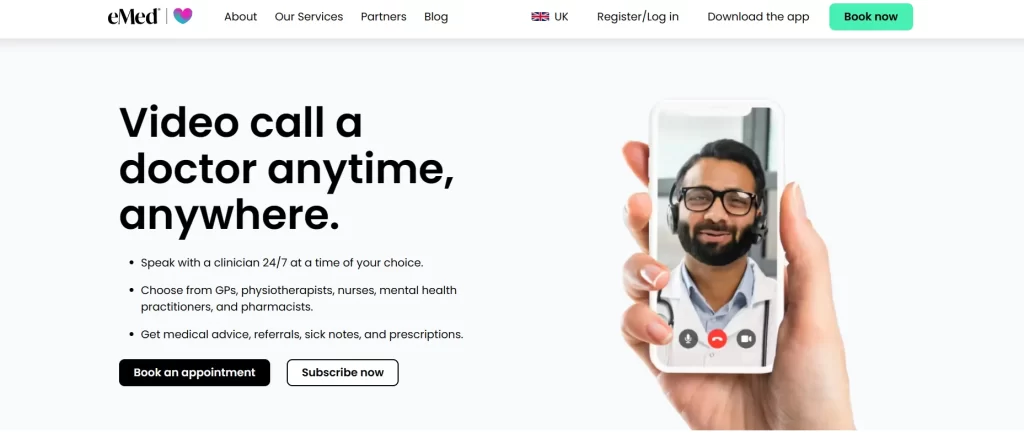
The chatbot allows users to describe their symptoms through text or speech. The chatbot leverages its built-in speech recognition and natural language processing to analyze the information provided. By comparing user symptoms to a vast database of conditions, the chatbot generates a list of potential diagnoses and recommends appropriate next steps, mimicking the functionality of a patient symptom-tracking tool.
3. ADA Health
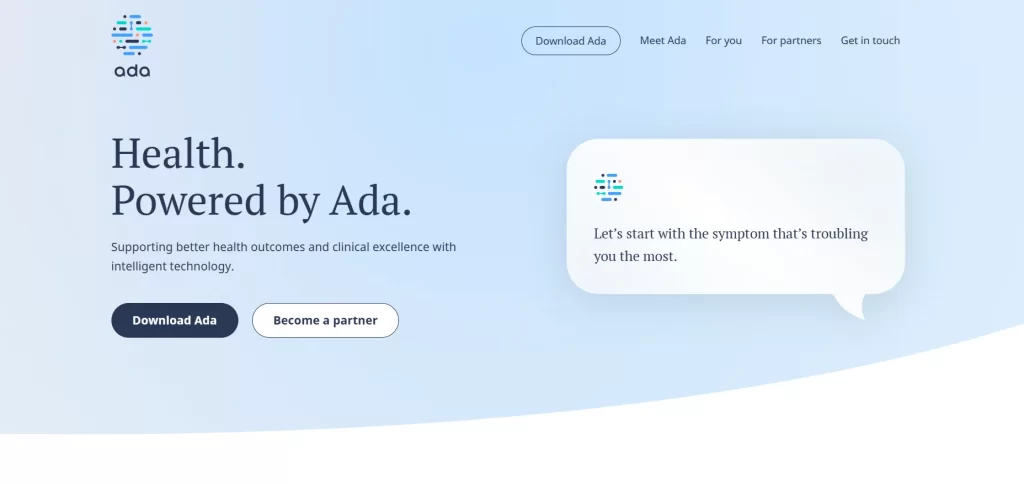
Ada asks users a series of straightforward questions. These answers are then analyzed against a vast dataset containing thousands of comparable situations and conditions. Based on analysis, ADA generates an approximation of the user’s health and provides relevant medical information and solutions.
Additionally, Ada offers users in-depth information on various medical conditions, treatments, and procedures. The app even connects users with local healthcare providers for further assistance.
4. Buoy Health
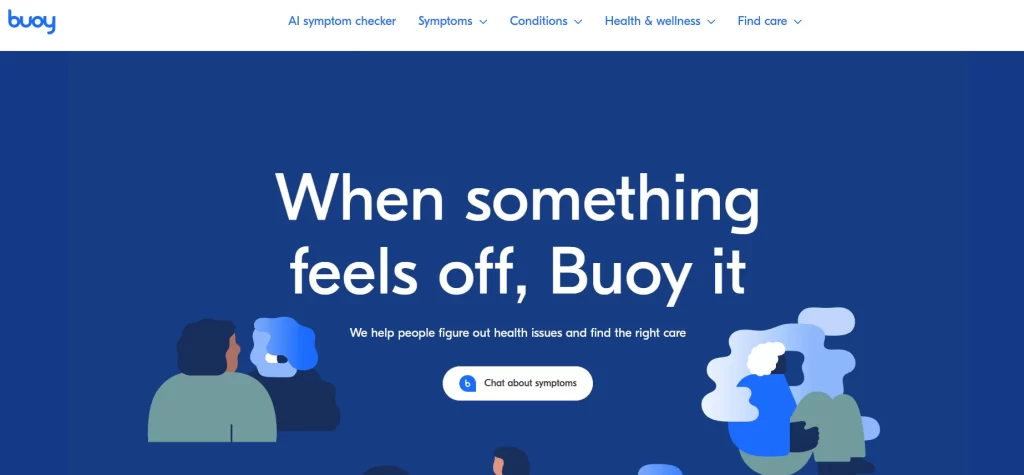
Buoy Health is a symptom checker chatbot built by a team of doctors and AI experts at Harvard. The chatbot aims to empower users with information about their health concerns. Buoy’s chatbot is trained on a massive dataset of medical information, including over 18,000 clinical papers and journals.
5. Hyro

Hyro moves beyond basic intent-based chatbots by utilizing language-based conversational AI and combines Natural Language Understanding (NLU), knowledge graphs, and computational linguistics to create a more natural user experience.
How To Develop A Healthcare Chatbot?
Healthcare chatbots are revolutionizing patient engagement. Learn how to build your own, from defining goals to conversation design, to empower patients and improve efficiency.
1. Develop Flows For Natural Conversations
Patients using the chatbot should feel like they’re interacting with a real person. Natural conversations require the chatbot to deliver relevant, contextual, and appropriately toned replies. Programmers must consider what makes text conversations meaningful. For example, if a user describes a stomachache and slight fever, the chatbot should recommend over-the-counter medication, dietary advice, or even suggest seeing a doctor.
2. Designing the User Interface
The user interface (UI) is the platform through which users interact with the chatbot. Most healthcare chatbots utilize a text-based interface where users type in their questions. Some even incorporate voice interfaces.
Popular development platforms for chatbot UIs include Facebook Messenger, Telegram, and Google Assistant. A well-designed interface should be user-friendly for everyone, regardless of technical expertise.
3. Understanding User Intent
By understanding user intent, the chatbot can deliver the most appropriate responses. Natural Language Understanding (NLU) modules play a crucial role in this process. NLU allows the chatbot to categorize user input and determine the user’s goal. For example, if a user complains of stomach pain and fever, the chatbot might suggest medication, dietary changes, or a doctor’s visit. The user’s selection should guide the conversation forward, making the interaction productive.
4. Identifying Entities
In healthcare chatbot development, entities are specific details within user input that provide clues about the user’s needs. Identifying these entities is essential for crafting a relevant response.
Understanding both user intent and entities is essential to creating chatbot conversations that mirror natural human interactions. For example, if a user in Chicago seeks medication for a stomachache and fever, the entities would be “pharmacy,” “medicine,” and “Chicago.”
5. Testing Healthcare Chatbot
Testing is the final step in healthcare chatbot development. After development is complete, programmers must thoroughly test the chatbot using a variety of parameters. Every user input should trigger the intended response. The accuracy of this process depends on the chatbot’s ability to effectively identify, classify, and categorize both user intent and entities.
Conclusion
The healthcare sector is transforming due to the integration of chatbots. These digital assistants ensure round-the-clock availability and efficiently gather and interact with patient data.
Also, the chatbots can handle multiple inquiries simultaneously, furnish instant information, and optimize various healthcare procedures.
As years move on, virtual healthcare assistants will become increasingly more important, altering how healthcare is given, assisting medical professionals, and empowering individuals to take an active role in their health and wellness.
How Can We Help With Building Your Healthcare Chatbot?
Idea Usher is a respected AI app development company. We understand the challenges of bringing innovative digital solutions to life. Our experienced in-house developers specialize in AI and custom-built solutions to fit your specific business needs.
We developed Vezita, a healthcare app for our clients that redefines patient-doctor interactions by allowing users to book consultations, chat securely, and manage medical records all in one place.
For over a decade, Idea Usher has transformed groundbreaking ideas into successful applications. We know the value of a strong development partner.
See our commitment to quality firsthand by browsing our portfolio. There, you’ll find real-world examples of our innovative solutions, showcasing our ability to translate concepts into user-friendly and effective technology.
When you need a healthcare chatbot solution, choose a qualified healthcare software development company like Idea Usher. We’ll ensure you get the best possible solution.
Connect with us today to learn how we can help you develop a chatbot for your healthcare system.
FAQ
Q. What are the four basic types of medical chatbots?
A. Feedback Collection, Conversational, FAQ, and Prescriptive are four basic types of Chatbots. Feedback Collection bots gather user opinions; Conversational bots engage in open-ended chats; FAQ bots answer frequently asked questions; and Prescriptive bots guide users through specific tasks.
Q. What is an example of using AI chatbots in health care?
A. An example of using AI chatbots in healthcare is Babylon Health’s chatbot, which provides virtual consultations and medical advice to users. Babylon’s AI-powered chatbot interacts with users and collects information about their symptoms, medical history, and other relevant factors to offer personalized health recommendations.
Q. How are chatbots used in medicine?
A. Chatbots are utilized in various ways in medicine to streamline healthcare processes, improve patient experiences, and enhance efficiency. Chatbots assist in preliminary diagnosis by collecting and analyzing patient symptoms, reducing the burden on healthcare providers and facilitating faster access to medical advice.










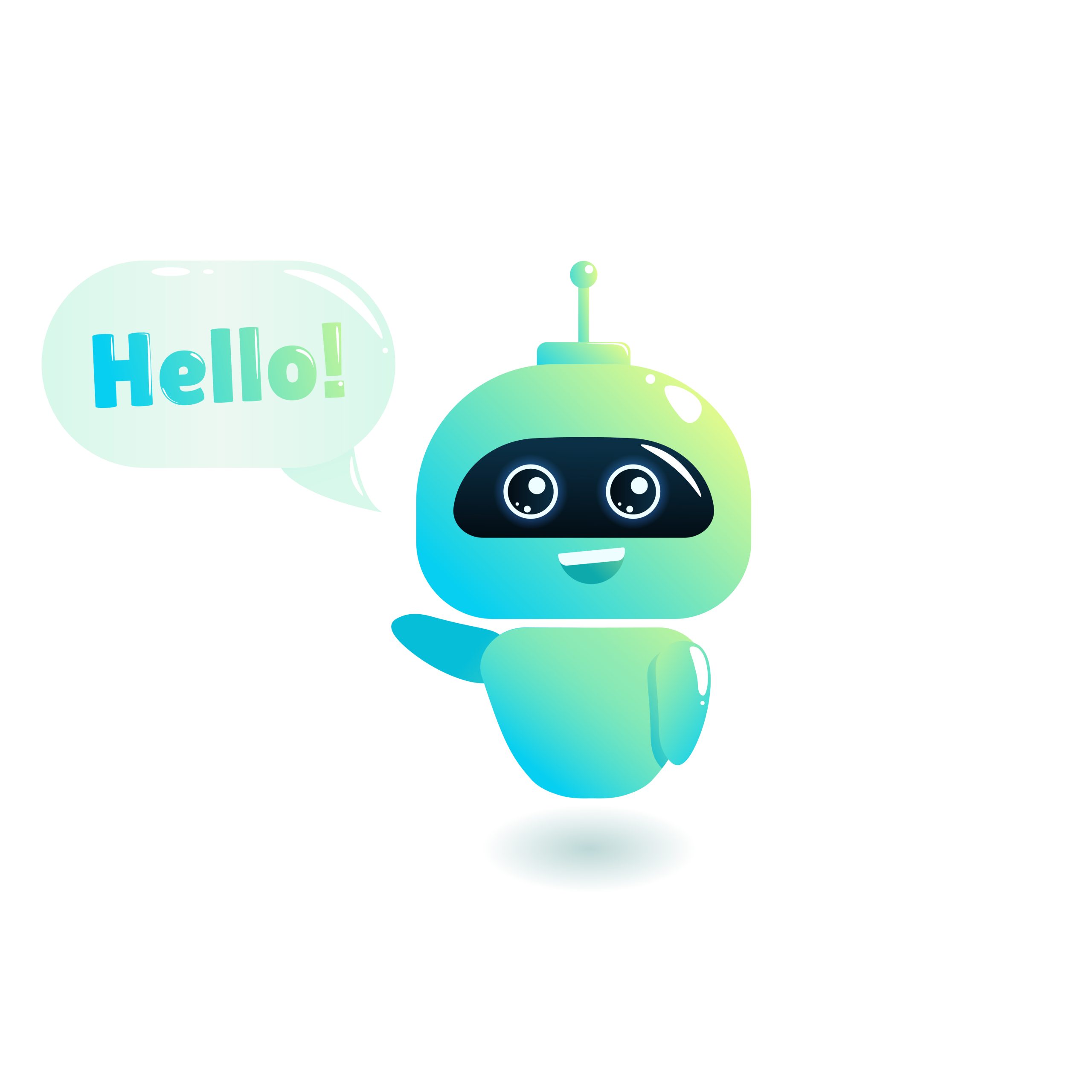


Gaurav Patil